Gaining useable outside space is often high on the wish list when it comes to finding your dream property. But great homes sometimes come with the compromise of an impractical sloping garden. Whether you’re working with an overgrown jungle or a blank canvas, it can be hard to know where to start with a hilly garden plot. As a starting point, it’s worth having a clear idea of how you eventually want to use the space.
If you’re tackling the garden as part of a home renovation or extension project, it is often the last to be completed. It might scupper your plans for the indoor-outdoor lifestyle you dreamed of if you don’t include enough in your original budget to sort it out.
Hard landscaping can be a big investment, and sloping gardens often require building work for retaining walls, steps or levelling the ground, which soon starts to add up. So, it pays to do some research before committing to getting a landscaping firm in or shopping around for materials.
To give you a helping hand, we’ve put together some tips to help you get started with planning your project.
Landscape design ideas for sloping gardens
A sloping garden can be a playground for your imagination, and with some creativity can produce a useable space you’ll love. Here are some of our favourite ideas:
- Create garden zones – Think of it as a series of outdoor rooms. This can help smaller gardens feel larger as you create multiple experiences and can add interest to larger gardens that are lacking in features. Zones can have different uses, be that play, rest or socialising, or simply create different vantage points and moods with subtle changes to the planting.
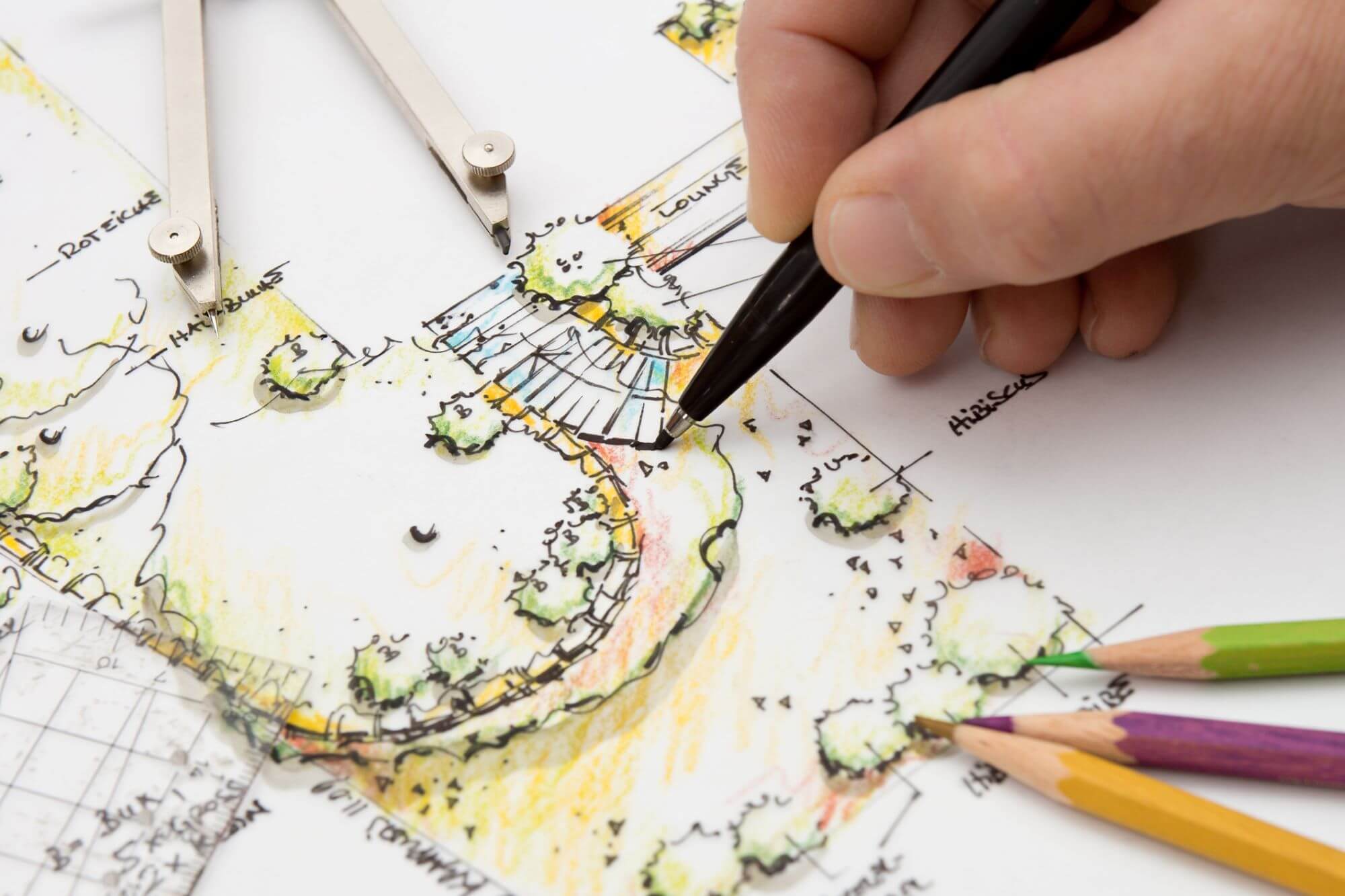
Sketch a scaled diagram of your garden layout to play around with zones and landscaping features. - Carve out garden terraces – Cut into the hillside to create flat areas and gain more useful space. Don’t forget you’ll need to plan some retaining walls to manage soil creep and any potential for landslip (take a look out our retaining wall ideas for some advice). You’ll also need to think about where water will flow, both through your soil and as run off in stormy conditions, and include adequate drainage.
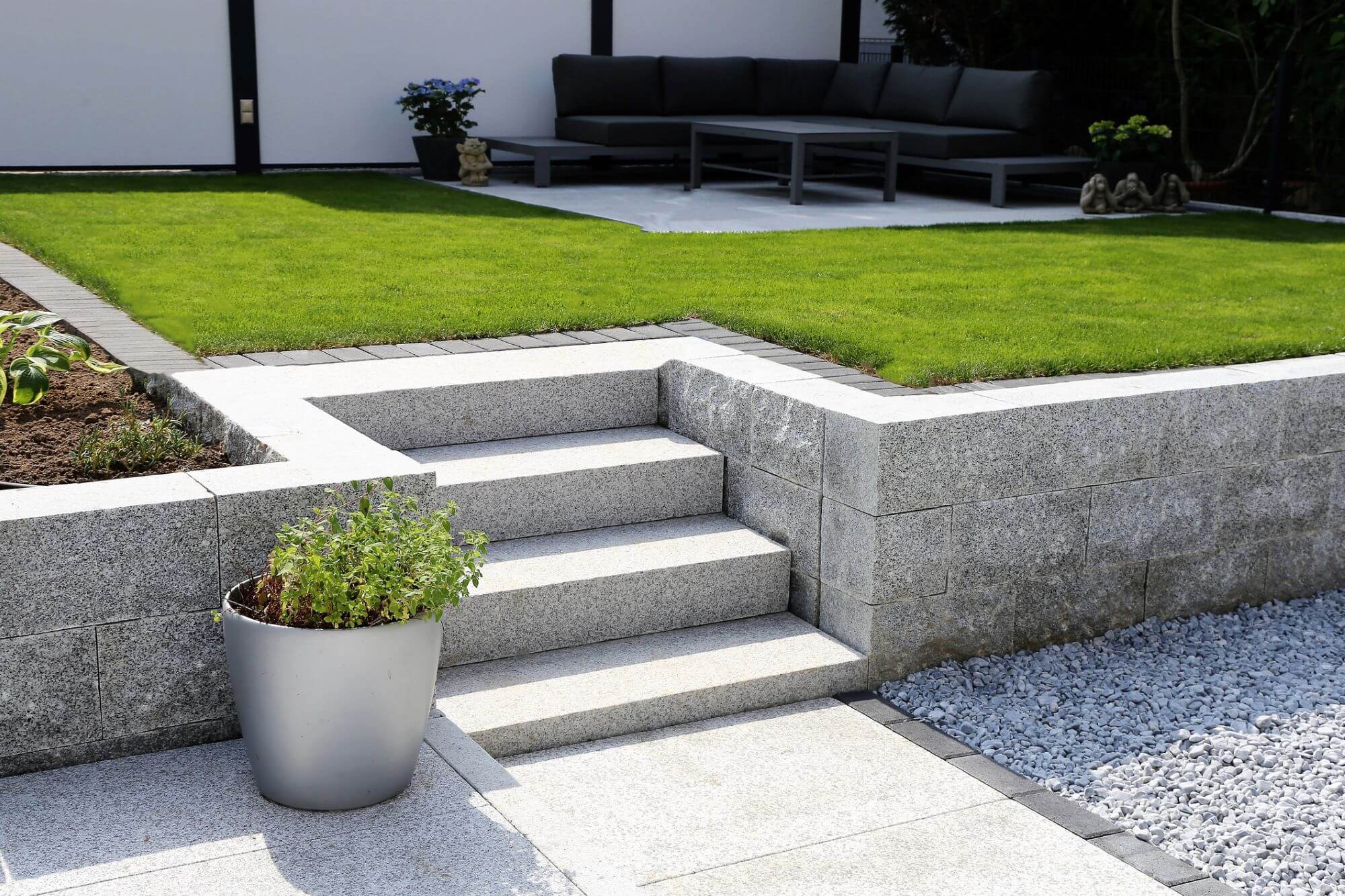
Digging into the slope to create terraces and levelling out flat areas of useable space calls for retaining walls. - Level out your sloping garden – If your garden is just gently sloping or hilly, it might be possible to level it out. You can do this yourself by hiring a rotavator and re-distributing the soil, or buy topsoil in bulk delivery bags to even out the bumps. Levelling your garden or, at least, lessening the angle of some sloped areas can work out cheaper than building hard landscaping features. Price up the cost of hiring a mini-digger or machinery, along with any bulk material deliveries or removals you might need, to see if there’s a saving for your project.
- Leading up the garden path – You may need to consider adding steps or paths and think about whether these will be hard landscaped with pavers or made from natural materials. Your choice of material can be guided by how much footfall your path will receive and how hilly your garden is, as some paths will receive more wear and tear than others. You may also need to think about drainage and run-off water – will this create an issue for neighbouring plants or down slope?
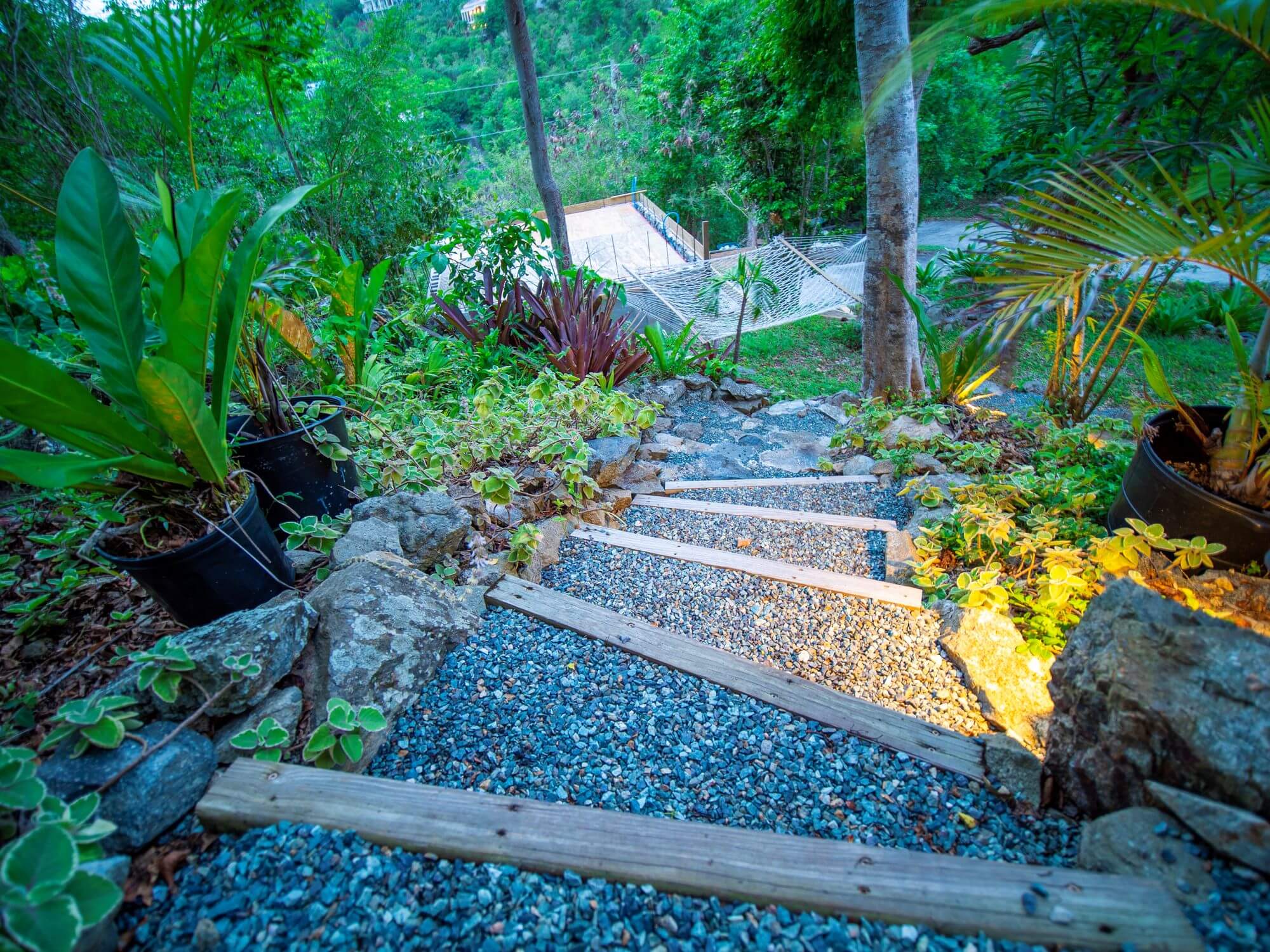
Adding hard landscaping structures can be costly. One DIY option is railway sleeper steps, but think about how much use your steps will need to withstand. - Add fun transitions – Having fun in the garden isn’t just for kids! Use the slope to your advantage with quirky features that delight, including water features that flow downhill, tunnels for kids and pets to crawl through, slides set into the slope, ladders (for plants or humans to scramble up) and swings. If you’re including a children’s play area, work with the slope – log sections embedded into the ground make great stepping stones for a climb uphill, and plastic guttering can make a great marble run or miniature water slide for toys.
- Add interest with planting – If you have a steep slope, you’ll need to choose plants that don’t mind hillsides. Plants and tree roots can add stability and act as a barrier and safety feature against falls – especially around play areas. Lawns can be difficult to maintain on a slope, but the Royal Horticultural Society recommend opting for less formal grasses as an alternative. They advise laying a meadow mix or wildflower turf (great for bees) or enhancing existing lawn with bulbs like snowdrops and crocuses for a springtime show.
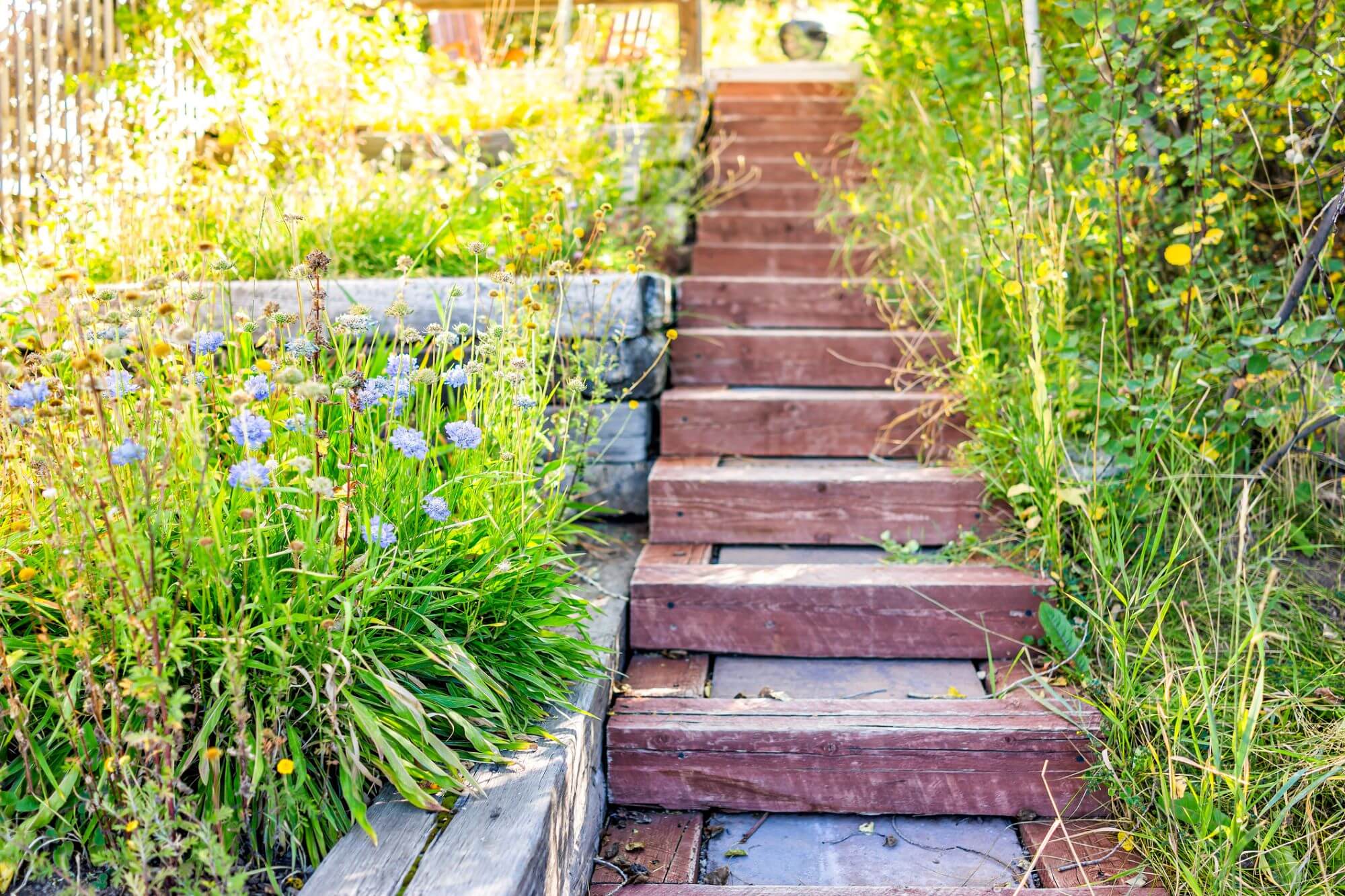
Sew a wildflower carpet to stabilise your slope and encourage bees, butterflies and birds. - Light up your garden features – If you want to use your garden into the summer evenings, plan in some lighting to make sure everyone stays safe navigating the slope in the dark. This might be as simple as adding some solar lights along pathways to lead visitors up and down the hill, or stringing festoon lighting above seating areas. As you’re on a slope, more of your garden is visible from the bottom, so why not showcase plants and trees with spotlights, or highlight structural features like retaining walls with uplighters.
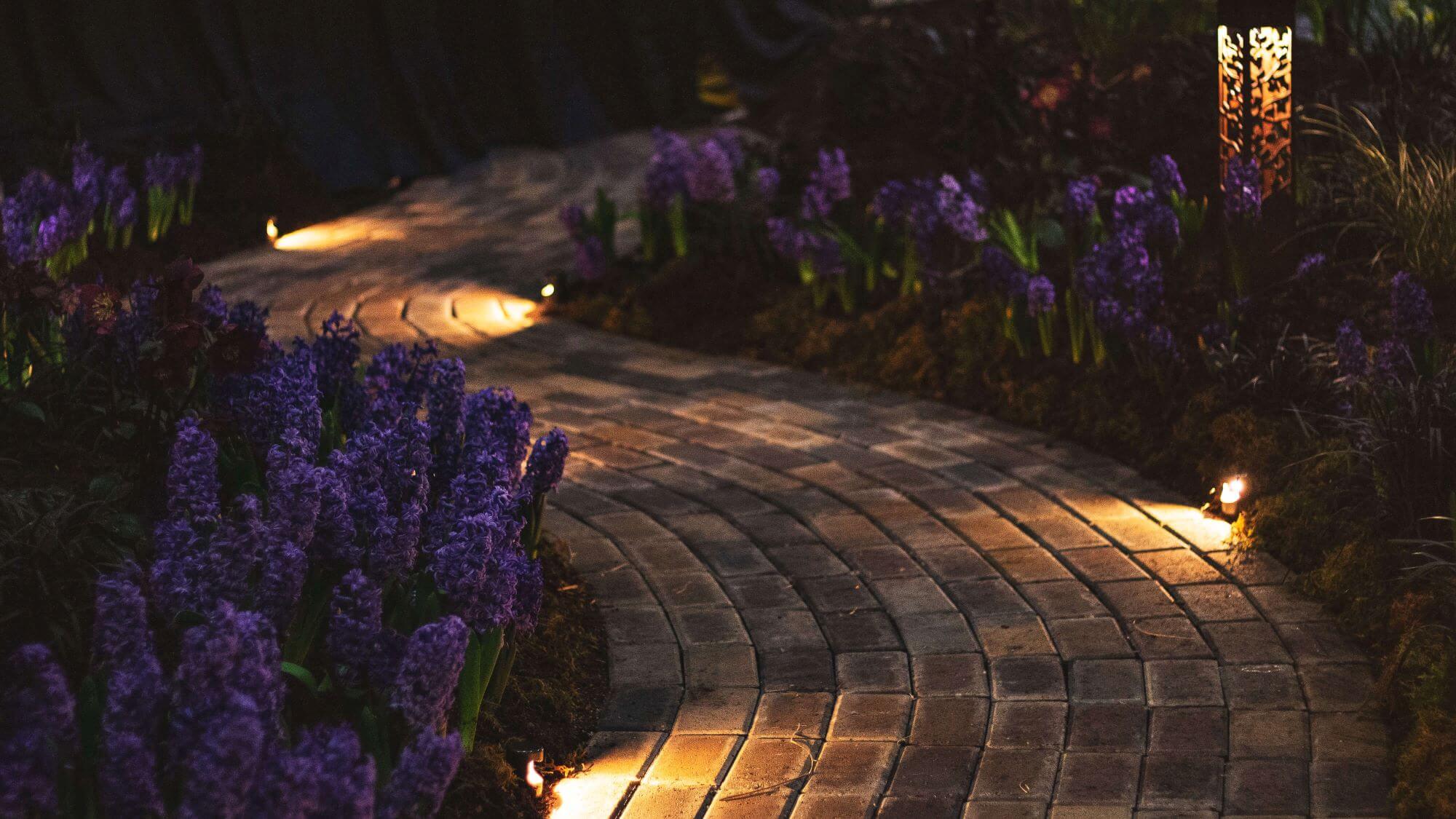
Light up your garden path to help guide the way on summer nights. (Photo by Cee via Unsplash.)
What are the issues with sloping gardens?
When planning your garden, it’s sensible to cover off some of the pitfalls and ‘what if’s. The main issues include:
- Rainwater and site drainage
With any garden on a slope, one of the main considerations is drainage. If you do anything to alter the landscape, like levelling an area for a patio, where will rainwater coming from upslope go, how will rainwater run off from the hard paving, and could it potentially cause problems down slope? - Slope stability
On very steep slopes, is landslip a hazard? Is the angle of the slope sufficient to sustain planting or does it need structural support from retaining walls? - Access and maintenance on steep sloping gardens
If you’re planning a lawn, will it be hard to maintain on a slope? Grass can be strimmed rather than mowed, but covering a large area is hard work. Can you access bushes and plants that need regular trimming and pruning easily? Also consider the amount of work involved with removing garden waste – eg, wheelbarrow access. - Safety on slopes and around retaining garden wall
Whether you’re adding some shallow terraces to a gentle slope of dealing with a much steeper garden, falling is always a hazard if you’re introducing a retaining wall. Think about safety with either fencing or planting to break falls and deter children, pets and adults alike from going too near to the edge.
Where to find expert advice
If you’re brimming with ideas for your sloping garden, but not so confident with ‘how to’, it may be time to make a few calls to local landscaping companies to bring your concept to life. They can advise on what will work best for your garden and your budget, and may come up with a few ideas you hadn’t thought of.
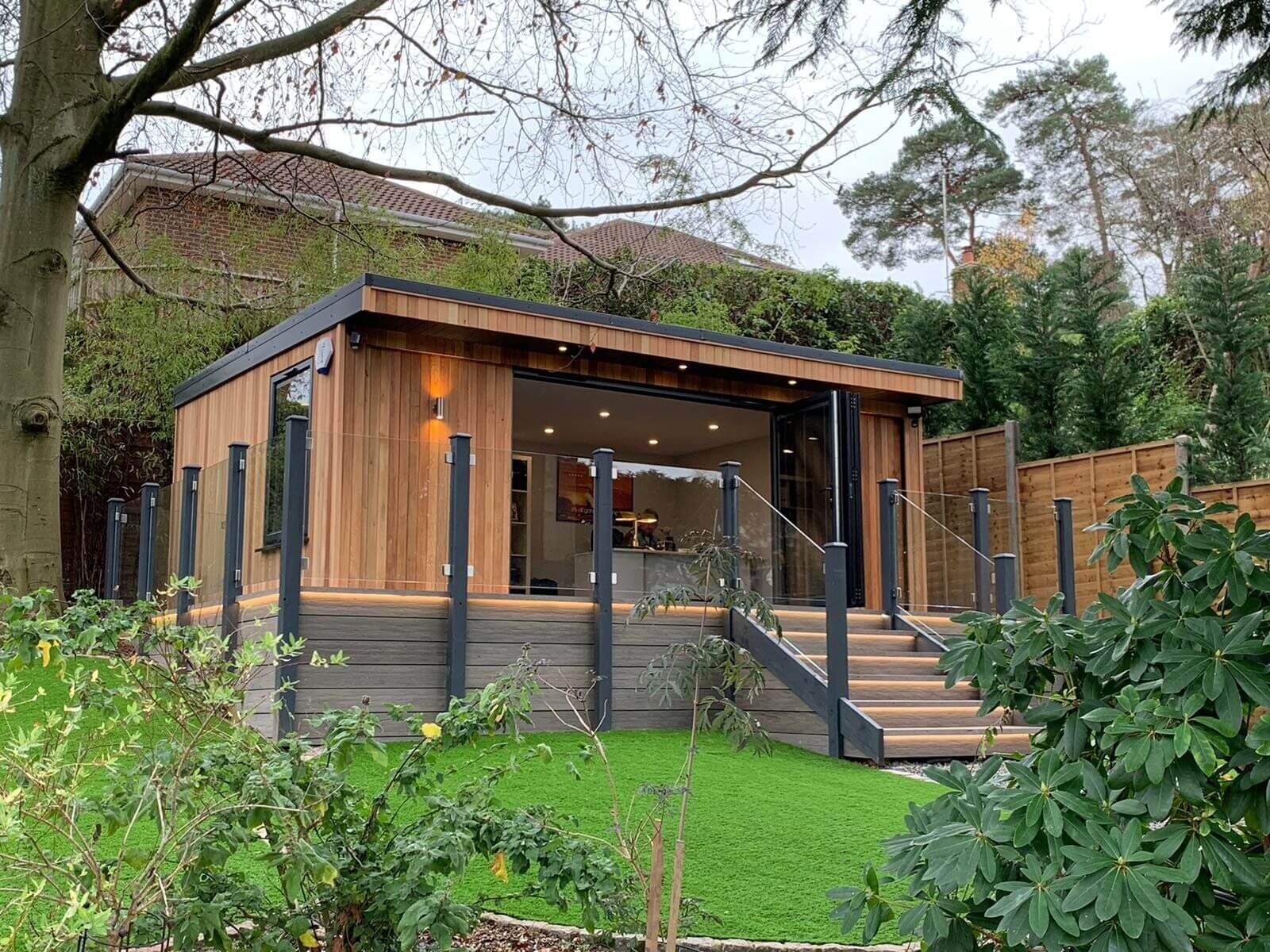
When you’re ready for a quote, you can find a local FMB member that specialises in landscaping with our Find a Builder tool. At the FMB, all our members have been vetted and their work has been independently inspected on site before they can join, so you book them for your garden renovation in confidence.

